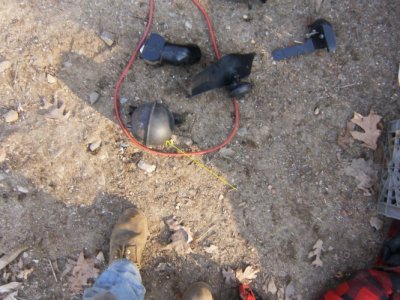That was all very well said.
Only thing I would have mentioned is: You NEED to have the System Vacuumed down BEFORE you start jumping the switch. With out having it sucked down your doomed to have higher pressures, plus its going to be harder then hell to get the system fully charged with air in the system...
You are right - and I realized, while writing the reply, that I should also include all the basic steps that are required before charging a newly installed system.
But to go into detail about everything would have taken forever. At a minimum we would need to discuss:
1. Component flushing
2. Assembly of components (with new o-rings of the correct type)
4. Necessity of a new filter/drier
5. Initial evacuation procedure
6. System integrity/leak down testing
7. Pre-charging with proper type/quantity of oil
But I can't touch type - I have to look down at the board for each key stroke - and it was late.
Not only that, but not many people have a vacuum pump (with the proper fittings) just hanging around the garage.
If anyone reads this and needs to purge a system of non-condensables (fancy term for air), but have no access to a deep vacuum pump, try the following. It is a real "old school" method. It displaces most of the air, but won't get all the moisture out and so it definitely requires the installation of a new filter drier:
After assembly, and initial refrigerant charge, get the system running on it's own. Due to the fact that the components and inter-connected piping were never evacuated there will be significant quantities of air in the system.
The air will become entrained with the refrigerant and flow along with it - until it gets to the condenser. In the condenser, cool air (flowing over the outside of the coils/fins) causes the hot refrigerant gas that comes in from the compressor to return to a liquid and precipitate out. It then falls to the bottom of the condenser.
Now the important part.
In the condenser, while the refrigerant can be cooled and changed back into a liquid, air retains it's gaseous state. Any air that enters along with the refrigerant cannot be condensed - hence the term "non-condensable".
As the refrigerant is cooled (condensed), it forms into droplets and falls to the bottom of the condenser. From there it flows through the high side piping and (via the metering device/orifice) enters the evap.
Anyway, back to the air that did not condense. Because it is lighter than the refrigerant vapor, it separates and rises to the top of the condenser.
After enough air is collected in the condenser, it begins to impact the cooling/condensing capacity of the heat exchanger.
Here's how to bleed the air out.
Run the A/C for an extented time and shut down.
Crack open the fitting on the tubing that connects to the top of the condenser. Without a CFC leak detector you will be doing this blind - nothing bad will happen but you may waste some refrigerant. Let the gas slowly escape for a minute or so and the retighten the tubing fittng.
Do this several times after assembly. You can stop when there doesn't appear to be any further improvement in system operation.
Keep in mind that you may be dumping some of the refrigerant along with the air, so be sure to keep the system fully charged.


